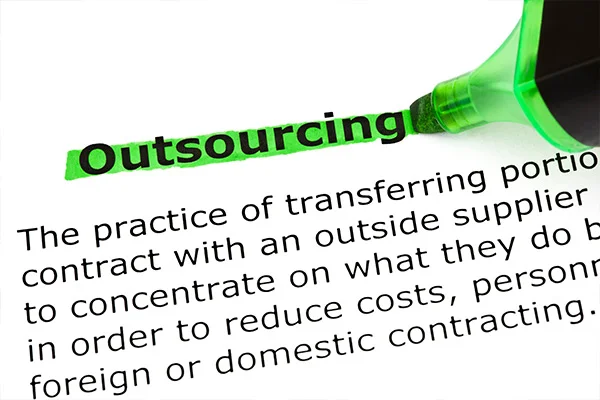Points to keep in mind when Outsourcing Software Development
- Home
- Blog Details

- September 3 2021
- admin
IT software outsourcing and CAD software outsourcing are some of the largest industries in the 21st century. Software development outsourcing takes place for various reasons, ranging from requiring specialized software/professionals to creating a digital product or addressing a given task.
A survey report indicates 57% of US start-ups have already outsourced their software development process.
Regardless of cases, outsourcing IT & CAD software projects is a positive decision that accelerates and accomplishes a software development need. But there is some caution to this.
Anything listed on the internet as software development service is not necessarily a perfect solution to your projects. There are various factors to look into, which makes finding a software development service an uphill task.
To make it easier for you, let us have a walk of some of the best and widely advised practices to adhere to when outsourcing software development projects.

Conduct background check
The first step is to evaluate your requirements and look for various software development service providers. Prepare a list of candidates. It helps in assessing market costs for such services and allows you to fix a reference point.

Once you have a fair idea, go ahead and shortlist the outsourcing firms that fit best to product requirements.
Carry out extensive research on the shortlisted companies and sort your preferred ones out. You should assess them based on their proficiencies, average turnaround time, and client reviews/testaments. Remember, you are entering into a relationship with a 3rd party vendor, and you cannot leap of faith. It is essential to be wary of anything that concerns your project and requirements. Starting a business partnership is easy but getting out of it can be messy if things go downhill.
Sort out your expenses in the correct order
There is a factor called Value for the product. The cheapest of things out there doesn’t necessarily mean they are your best bet. Even with a fixed budget, it is recommended to look for quality and not just the cheapest outsourcing vendor available. It would be best if you struck a balance between your expectations and your expenses.
Once this is figured out, the next step is to figure out the payment process and payments intervals. Businesses often come across situations that trigger payment hassles, so such possibilities must be considered and discussed beforehand. There is also a high chance of crossing the stipulated budget when outsourcing a project due to unforeseen necessities or unexpected circumstances. Therefore, it is best to leave some space in your budget for such circumstances. After all, better to be safe than sorry.
Choose the most suitable pricing model
The next step after arranging finances is looking into different types of pricing models. In this case, the pricing model is about the payment structure agreed with the vendor partner. Here are some commonly used pricing models:
- Hourly rates: In this case, a vendor is paid a fixed rate per hour. This model suits smaller software development projects since their lifecycle are short; hence, it makes sense to consider it hourly. This model also comes in handy when you have projects that only require minute modifications.
- Fixed rates: Fixed budgets involve an arrangement with clear and well-defined goals, scope, and timeline.
- Dedicatedy: Large projects or companies require a fully dedicated team, and such models need teams to work on-site.

To find the best model that works for your project, sit down, and chalk up a plan of action with the 3rd party vendor partner.
Ensure tight security of your project and product
It is an important side many up-and-coming project owners might overlook. There are a few crucial security steps you should take to safeguard your product while dealing with third-party vendors:
- Enact a secure means of transferring information on the project.
- Implement a degree of access control over sensitive data.
Please enquire about the security measures and protocols the vendor partner has set up and how they plan to work with your data. Generally, a good NDA (Non-Disclosure Agreement) should sort this out. An NDA will clearly state the clauses regarding what is allowed and not allowed with the information once the vendor partner has possession.
Set Benchmarks
Although in the software development process, various working models have been put to the test. The agile methodology is popular among all. The reason for such a working principle is that a project without a definite aim and timeline can end up in a catastrophe. Some companies have witnessed such malfunctions since they put all their hopes upon the vendor team. It is vital to fix certain milestones and mini goals, to keep a step-by-step approach on the total lifecycle of the project. It also prevents the project from becoming a cluster, and you can monitor, and track completed and pending tasks.
Proper documentation
Record keeping has been an essential aspect from biblical days. Proper documentation acts as a footprint of how your project has evolved through the whole process. The reasons why you should have adequate documentation is because:
- Documentation makes it easy to retrace procedures in case of any hassle pops up.
- Documentation maintains a written record of all transactions between you and the vendor partner.
- Documentation is one of the ways to ensure there is no room for mistakes and errors over scope, requirements, materials, content, or responsibilities.
- If you have a particular outsourcing or in-house team, good documentation is essential to understand the steps incorporated and helps following up on pending work. It makes upgrading and modifying a less cumbersome process.
Establish communication outlets and time schedules
One of the most significant issues while working with 3rd party vendor team is the lack of clarity regarding instructions and misunderstanding when developing custom applications. Such issues lead to delays and sometimes render incomplete or botched software. To address this matter, the first thing to do is set up a suitable communication medium right at the beginning of the project. The project scope and deliverables must be clearly explained and understood by both sides. During the operation, both teams should cooperate, and there must be periodic meetings on progress, issues, actionable, etc. A steady flow of information makes it easier for both parties to stay updated. If you are dealing with a foreign-based vendor partner from a different time zone, make sure the time constraints are considered, and there is no language barrier.
Set realistic goals
Finally, you must consider human factors. Dealing with humans requires flexibility. It is impractical to give a gigantic project to a vendor partner and set a short time frame expecting delivery by the deadline. You will end up with patched-up software that malfunctions. Remember to allocate time and resources for unexpected occurrences. Again, better to be safe than sorry.
An application may look impressive, but if it fails to perform as intended, your investment can be considered waste. When engaging with a 3rd party service, the emphasis should be on the desired functions, features, and smooth, easy user interface over aesthetics. Once your product performs as it should be, you can focus on its appearance and finishing look. This paragraph here no way rules out the importance of attractive looking, well-presented product, but more than what meets the eye.
Entering a partnership with a new 3rd party software development team is a meticulous and time-consuming process. However, keeping the points mentioned above should ensure seamless cooperation between you and the partner.

